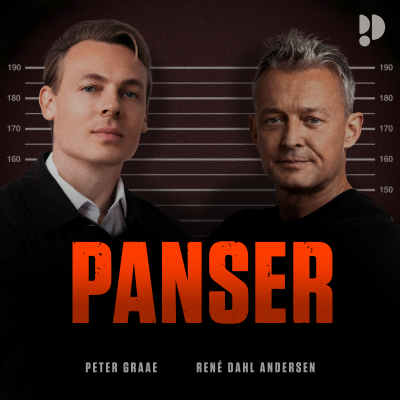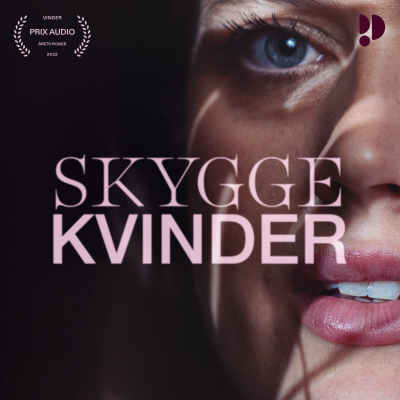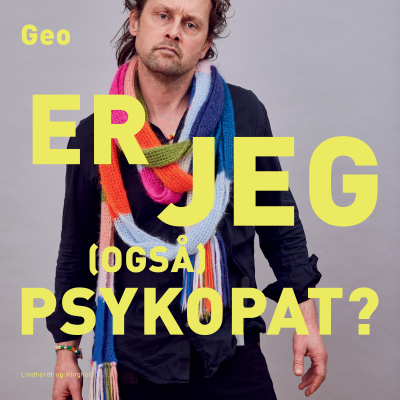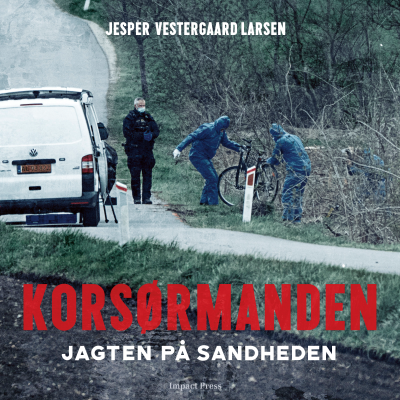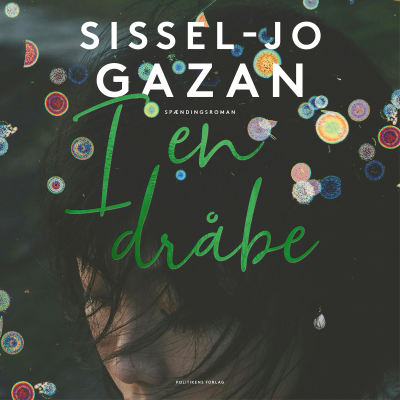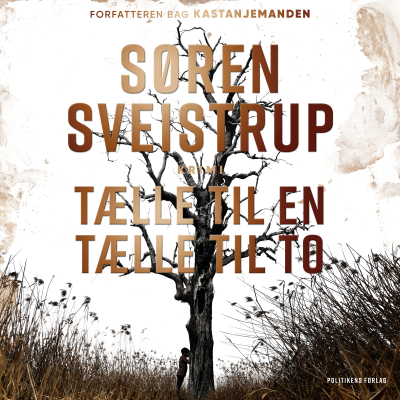
Revisiting the Rite: The Rite of Spring Centenary Conference
Podcast af Oxford University
The premiere at the Théâtre des Champs Élysées in Paris on 29 May 1913 of The Rite of Spring Scenes from Pagan Russia was a quintessential ‘total work of art’. An interdisciplinary, international one-day conference was organized by Dr Claire O’Mahony (University of Oxford) in May 2013 which examined the cross-fertilizations between ballet and design in the creation of the original production as well its critical reception and global legacies up to the 2013 centenary productions. Fifteen scholars from universities around the globe investigated both the continuity and ruptures with the traditions of choreographic, visual, musical and literary cultures it provoked. Most of them agreed to have podcasts recorded which form this series.
Prøv gratis i 7 dage
99,00 kr. / måned efter prøveperiode.Ingen binding.
Alle episoder
9 episoderIgor Stravinsky’s Le Sacre du printemps is arguably the most influential score composed for dance in the last century. Premiered to an unsuspecting Parisian audience in 1913, this Modernist ballet was subtitled ‘Scenes of Pagan Russia,’ a moniker that evoked the rituals of pre-Christian society. Vaslav Nijinsky’s groundbreaking choreography shocked audiences with its visceral embodiment of primeval spirituality, and Sacre has subsequently been re-staged by a wide variety of classical and contemporary choreographers across the world, including Mary Wigman, Martha Graham, Pina Bausch, and Maurice Béjart. This paper focuses on a distinctly non-Western version of Stravinsky’s score, namely Min Tanaka’s Butoh choreography of 1987. Tanaka’s work, with stage settings by Richard Serra, was premiered a year after the death of his mentor Tatsumi Hijikata, one of the ‘founding fathers’ of the Butoh form. In this paper, I draw comparisons between Tanaka’s stark movement vocabulary and Western embodiments of Sacre, including those of Bausch and Wigman, in order to chart a cross-cultural dialogue in dance performance since the 1913 premiere. With his controversial work, Nijinsky explored new levels of primitive ritualism in performance. He induced a company of classically trained dancers to revert to a primordial form of movement, enacting their ritual through a new choreographic vocabulary derived from elements of Central Asian folk dance. Stravinsky’s score has come to be an ongoing source of inspiration for choreographers exploring non-Western ritual from 1913 to the present day, and I posit that Tanaka’s Sacre symbolises the logical conclusion of this dialogue between Eastern and Western performance. I argue that avant-garde dance performance throughout the twentieth century has been shaped by an amalgamation of cultural elements, and that, ultimately, this inter-cultural dialogue represents Nijinsky’s enduring Modernist legacy.
Seven years after the succès de scandale of the Stravinsky-Nijinsky-Roerich ballet Le Sacre du printemps, Serge Diaghilev decided to revive the ballet with new choreography by his young protégé, Léonide Massine. The collaboration with Stravinsky and the process of rechoreographing Sacre gave Massine new directions for defining his choreographic voice through developing his own movement vocabulary. In working with Stravinsky, Massine also developed his ideas of using counterpoint between the movement and music. Chosen by Diaghilev to replace Vaslav Nijinsky as leading dancer and choreographer, Massine did not have the bravura classical ballet technique of his predecessor, but he had a ‘spark’ on stage that captured Diaghilev’s attention. Mentored by Diaghilev in the collaborative process, Massine achieved a notable success with his early ballets, particularly Parade (1917), which had a scandalous premiere; La Boutique Fantasque (1919), which charmed audiences; and Le Tricorne (1919), which was an instant success. With these and other successful ballets later in his career, Massine’s 1920 version of Le Sacre du printemps is often overlooked. Massine’s Sacre premiered in the same theatre as the original production, Théâtre Champs-Elysées, and it was the last ballet that Léonide Massine created for the Ballets Russes under Diaghilev’s tutelage. (He returned to choreograph two ballets a few years later.) He left the company shortly after the premiere and embarked on a long and remarkable choreographic career, using the tools that he had developed during his collaboration with Stravinsky. This paper will examine Léonide Massine’s choreography for Le Sacre du printemps, with an introduction to his movement vocabulary in his theory of composition and a discussion of the Massine-Stravinsky collaboration. The author worked with Léonide Massine as a dancer and choreographic assistant, and holds the Massine Diploma in Theory and Composition.
This study analyses the reception of The Rite of Spring in the Spanish cultural networks. Although the ballet was only performed in 1913, three years before the first visit of Diaghilev’s Ballets Russes to Spain, its influence became notorious among some Spanish choreographers, composers, painters and intellectuals. In 1916, during the first of the several tours with the company, Stravinsky played a piano transcription of the score in Madrid. Nevertheless, it was not until 1928 that the complete version was presented at the Liceu in Barcelona. And, the following year, the dance critic and composer Adolfo Salazar claimed for the performance of the entire ballet at the Spanish scene, considering it the most important work of the Ballets Russes. However, in 1930 Unión Radio boosted the diffusion of The Rite of Spring, offering the music through the radio and publishing several articles in its magazine Ondas. The idea was followed by a record made by the Columbia Graphophone Company located in San Sebastián. Finally, at the end of 1932, Enrique Fernández Arbós conducted La consagración de la primavera at the Calderón Theatre in Madrid. Despite the fact that almost twenty years had passed since its première, the score was still considered one of the most modern works performed in Spain. This paper will analyse the impact of The Rite of Spring in the Spanish dance, music and fine arts. Besides, it will study the contributions and exchanges between Stravinsky, the Ballets Russes’ troupe and the Spanish artists and intellectuals –Manuel de Falla, Cipriano Rivas Cherif, Margarita Nelken, Joaquín Fesser, etc. – up to 1933, the last visit of the composer before the outbreak of the Spanish Civil War.
In a notable scene from Women in Love (1920), D. H. Lawrence draws attention to the popularity of Diaghilev’s enterprise as representative of the avant garde in the arts in contemporary Britain. He describes how, following Hermione’s dinner party, guests perform a dance in the style of the sophisticated Ballets Russes. Elsewhere, Lawrence’s sympathies lay rather with the individualism of free dance that would have been closer to the innovative work of Loïe Fuller, Isadora Duncan or the natural rhythms of Jaques-Dalcroze’s Eurhythmics. Indeed, Lawrence more often explores dance’s function as individual expression of the body’s liberation from Edwardian inhibition rather than the spectacle of dance as entertainment or performance. On another occasion his fictional evocation of dance draws on an imaginative reconstruction of primitive ritual that uncannily suggests the performance strategies of Diaghilev’s production of the Rite. Lawrence’s short story, ‘The Woman Who Rode Away’ (1925) on the surface springs from anthropological interests in dance stimulated by his travels in the American south and Mexico. Yet the structure and tone of the narrative indicates that Lawrence’s thinking about gender and primitivism owed something to the treatment of these issues in Diaghilev’s radical production of 1913 and its brief 1920 revival. The story tells of a young white American woman who is abducted by an indigenous pueblo Indian tribe and offered as a sacrifice to the sun to ensure the fertilisation of the land when winter is over. By exploring the text in the context of early performances of the ballet and a range of Lawrentian responses to the visual arts, dance, and psychoanalysis, this paper shows how Lawrence’s story combines anthropological observation and performative strategies recalling Roerich’s, Stravinsky’s, Nijinsky’s and Massine’s contributions to The Rite of Spring.
For a few nights in March 1914 if contemplating buying a theatre ticket in London, there was a brief chance when one could have seen Nijinsky dance at the Palace Theatre one night and the next the new Shakespeare’s A Midsummer Night’s Dream at the Savoy Theatre. Had one had the rare chance to view the 1913 London performance of the Sacre and then the Savoy Dream eight months later, one might well have been struck by the mutuality of Harley Granville Barker’s and Sergei Diaghilev’s strategies as much as their distinctness. The ethos and practices of these two productions striving to achieve a ‘total work of art’ resonate and contrast with each other in the principles of collaboration in the two companies: the deployment of intensified simplification in performance to achieve the ‘gesamtkunstwerk’; the use of colour and supra-temporal effects to create stage decoration rather than pictorialism; the destabilization of gender and the imagining of the primitive was at the heart of both scenarios. This paper will recuperate the creative collaboration at the centre of the Savoy Dream, examining the neglected surviving design sketches of Norman Wilkinson as well as the interpretative contribution of Barker’s wife, Lilah McCarthy, to explore the continuities and ruptures between these rites of spring and midsummer.
Prøv gratis i 7 dage
99,00 kr. / måned efter prøveperiode.Ingen binding.
Eksklusive podcasts
Uden reklamer
Gratis podcasts
Lydbøger
20 timer / måned

